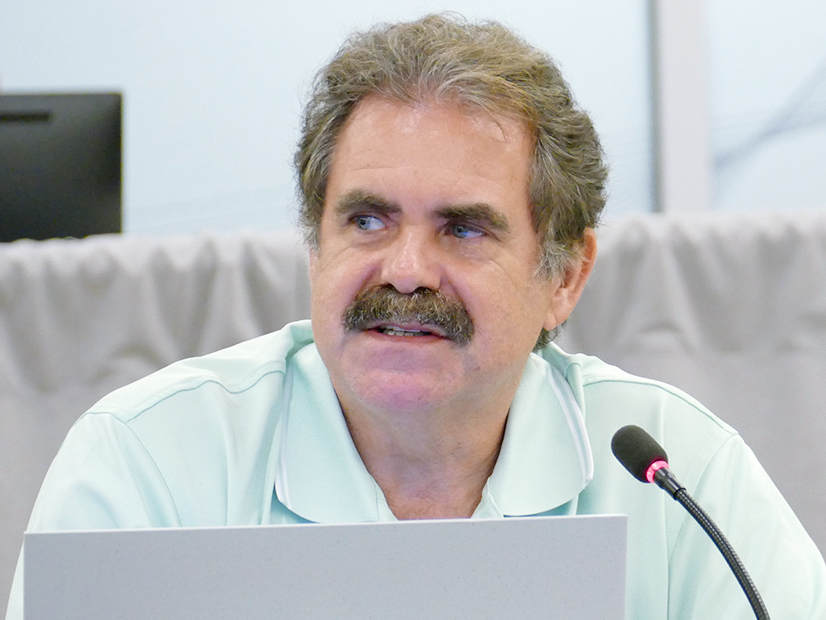VALLEY FORGE, Pa. — None of the 20 proposals PJM and stakeholders drafted through the Critical Issue Fast Path (CIFP) to rework the capacity market garnered sector-weighted support from the Members Committee on Wednesday.
The vote caps off five months of stakeholder meetings, culminating in the proposals being presented to the PJM Board of Managers on Wednesday before the MC vote. With the stakeholders’ portion of the CIFP process complete, the board now will decide if it will direct PJM to make a FERC filing to revise the capacity market and what form that may take. In its letter initiating the process, the board targeted Oct. 1 for making a filing.
Board Chair Mark Takahashi said they will work through the proposals and perspectives they heard Wednesday and how stakeholders voted when considering next steps over the coming weeks. He said the board may reach out to CIFP package sponsors for more information about what they proposed.
“I do think we’re trying to get something as far as we can in the next few weeks,” he said.
Though none of the packages received the committee’s support, PJM CEO Manu Asthana said he saw pockets of support that could aid the board in its deliberations. PJM posted the sector-weighted voting results on its website. The detailed voting report likely will come later in the week.
“We’re going to have to spend several working sessions working item by item … and this input is going to be invaluable,” he said.
A proposal focused on limiting the October filing to revising the Capacity Performance (CP) nonperformance penalty rate generators pay should their units not meet their obligations during an emergency, as well as the stop-loss limit capping the amount they can pay in penalties over a year. Instead of being based on the net cost of new entry, the proposal would have based the penalties on the Base Residual Auction (BRA) clearing price for that delivery year. The Independent Market Monitor; Daymark Energy Advisors and East Kentucky Power Cooperative; and American Municipal Power (AMP) and J-Power all submitted identical proposals making those changes, which were voted on as one. (See “Several Stakeholders Propose Variants of PJM Proposals,” PJM Stakeholders Finalize CIFP Proposals Ahead of Vote.)
Speaking after the vote, Paul Sotkiewicz, representing J-Power USA, urged the board to take into consideration that changing the CP structure to de-risk the market using the BRA price as the basis for penalties and stop-loss did receive majority support (2.8 out of 5), although it failed to meet the sector-weighted threshold. It was the only proposal to receive a majority of support. He noted that the MC previously endorsed changing the penalty rate and stop-loss to be based on the auction clearing price in May. (See FERC Approves PJM Change to Emergency Triggers.)
“I would encourage you to think clearly that you’re getting a second signal from the membership on that,” he said.
PJM’s annual capacity market proposal was the second-highest vote getter with 41% support. It includes the risk modeling, winterization requirements, hourly bilateral capacity obligation exchanges and other components of the seasonal proposal the RTO has made throughout the CIFP process, but retains the annual capacity auction structure. The seasonal model received 24.7% support. (See “PJM Adds Annual Auction Design Proposal,” PJM Stakeholders Finalize CIFP Proposals Ahead of Vote.)
Two proposals from AMP and J-Power received the third- and fourth-highest support, 39.4% and 37.9%. They would create a transitional phase with the changes to the penalties, as well as revising the balancing ratio to include net exports and applying the same penalties to FRR resources that generators participating in PJM’s Reliability Pricing Model face. The option of using physical penalty commitments also would be eliminated for FRR entities. (See “Stakeholder Hourly Capacity Proposals,” PJM Stakeholders Finalize CIFP Proposals Ahead of Vote.)
The proposal for the second phase would revise use of a variant of the Monitor’s proposed hourly capacity model, changed to have a two-year procurement horizon with two Incremental Auctions and no exceptions to the requirement that capacity resources offer into the energy market.
The Monitor’s Sustainable Capacity Market followed in fourth place with 37.4% sector-weighted support and would have paid capacity for each hour they are able to offer their capacity into the energy markets. (See “Monitor Proposes Hourly Model with Annual Pricing,” PJM Stakeholders Finalize CIFP Proposals Ahead of Vote.)
[Editor’s Note: An earlier version of this article incorrectly stated that AMP’s and J-Power’s proposals came in second and third in voting.]



